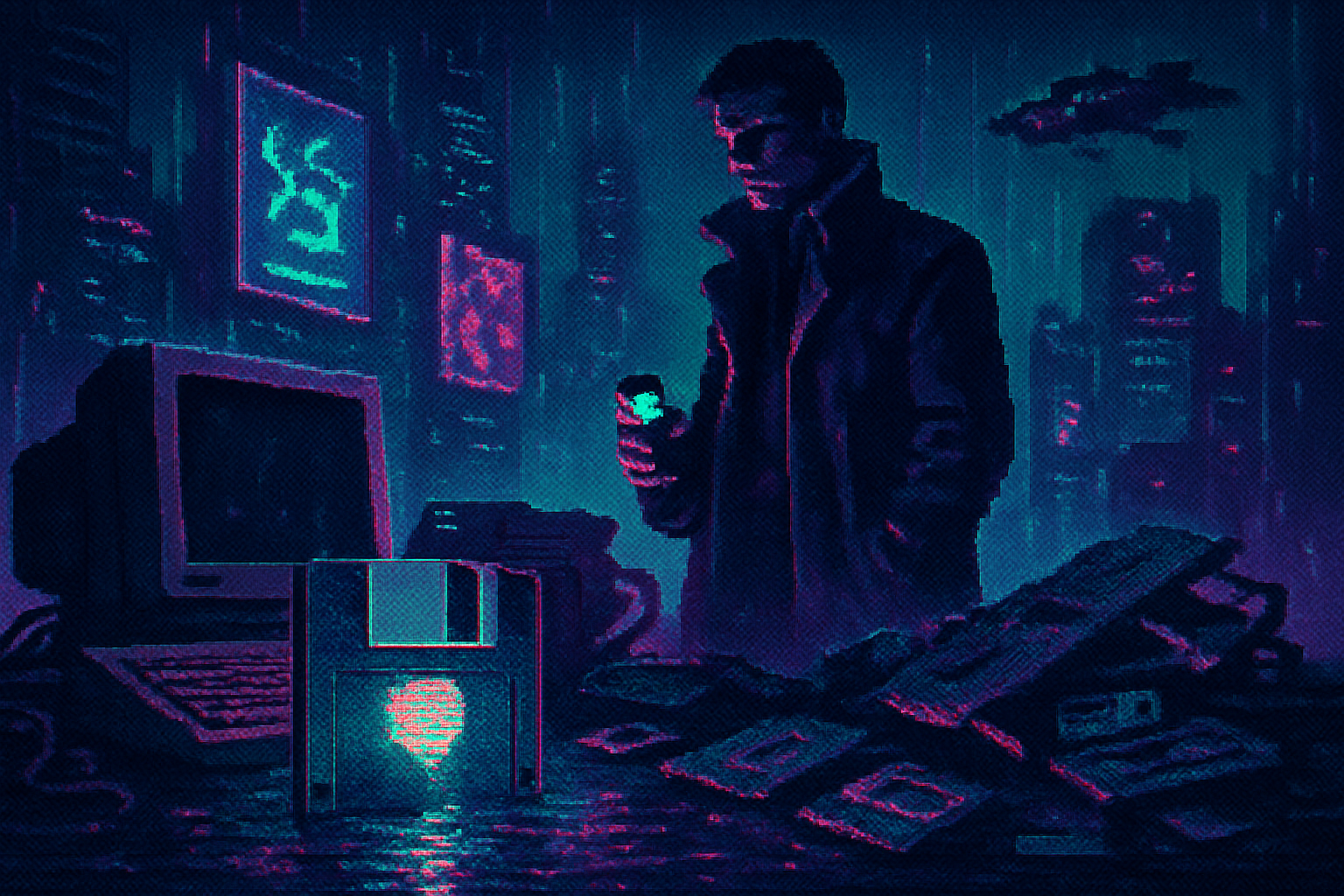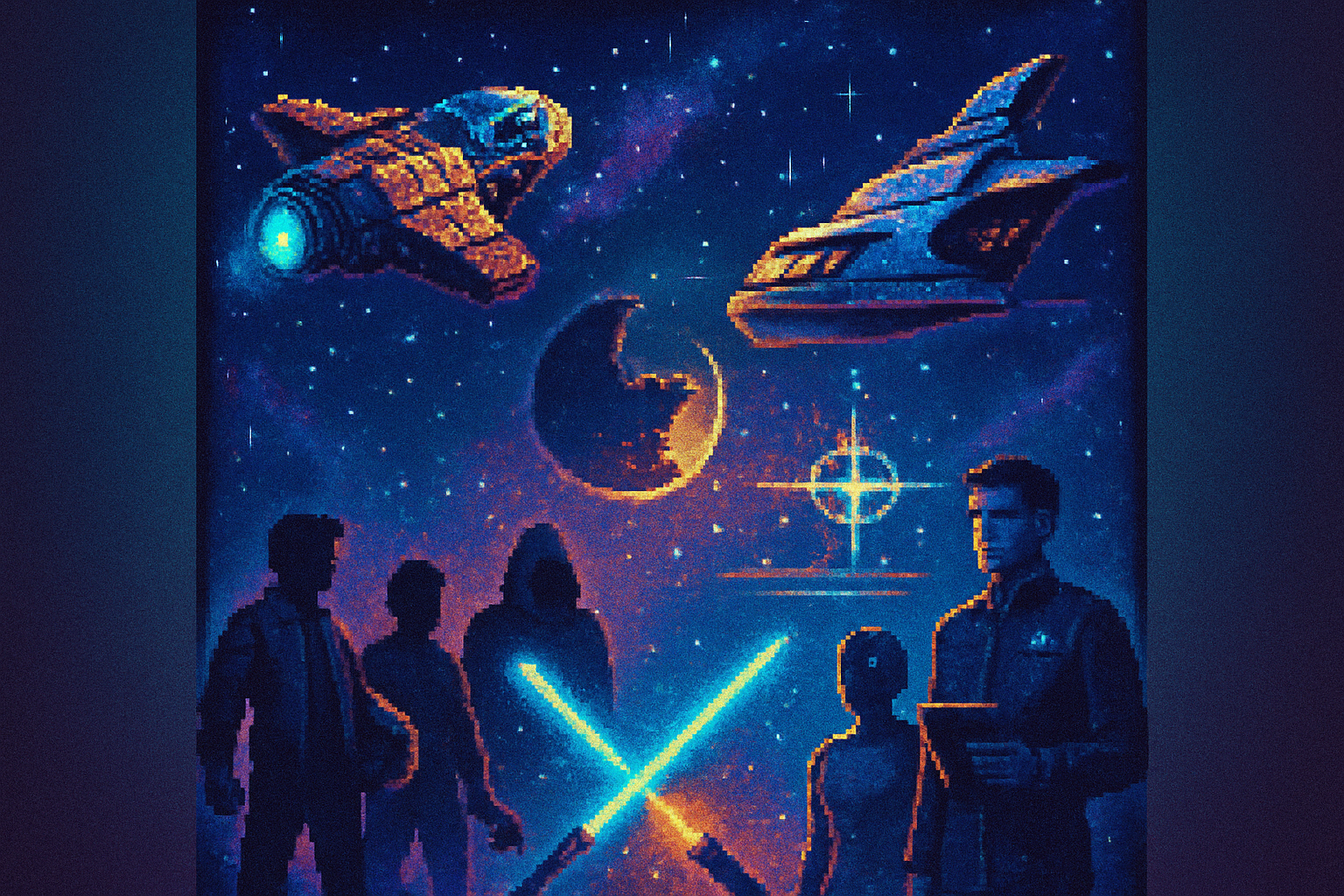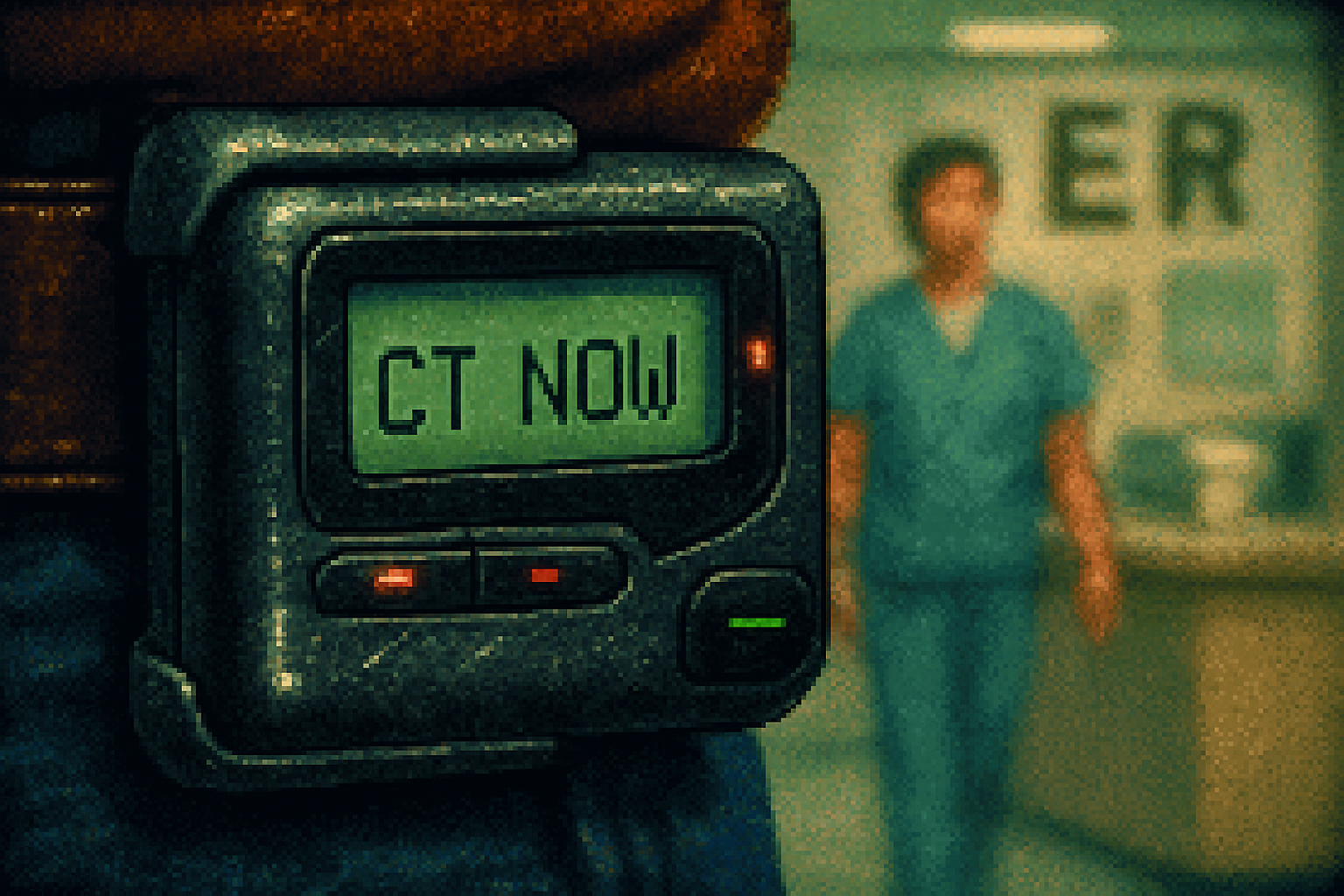· culture · 8 min read
The Lost Gems of Retro Sci‑Fi Video Games: Hidden Treasures You Need to Play
A guided tour through underrated sci‑fi games from the 1980s and 1990s-the strange, brilliant experiments that shaped modern sci‑fi gaming but got buried under blockbuster noise. How they mattered then, why they still matter, and where to play them today.

I still remember blowing into an ancient floppy disk and feeling, with a childish sort of reverence, that I was about to step into someone else’s mad future.
That was the cheap thrill of retro sci‑fi gaming: every pixelated planet, every creaky FM synth, felt like a discovery. Some of those futures became household names-Metroid, Doom, System Shock-and rightly so. But alongside them were quieter, riskier experiments: games that tried to blend literature and code, cinema and joystick, philosophy and bad graphics. They didn’t always sell millions. They didn’t always age well. But they taught designers how to tell science‑fiction stories with interactivity.
Below: a curated tour of those lost gems - what made them special, why they were overlooked, and how you can still play them without gouging your nostalgia fund.
How I chose these games (and why it matters)
This isn’t a list of cult titles you’ve seen on T‑shirts. I picked games that:
- pushed mechanics or narrative forms in ways that influenced later designers
- were clearly sci‑fi in theme and ambition (space opera, cyberpunk, weird futures)
- are harder to find in mainstream memory, despite meaningful contributions to the medium
For each game I explain what it did, why it matters now, why it was overlooked, and where to play it.
Starflight (1986)
- What it is - A sprawling space‑exploration RPG where you pilot a starship, recruit crew, and map uncharted systems while balancing resources and alien diplomacy. See
- Why it mattered - Precedes and informs open‑world space sims. It taught designers how to make emergent stories out of exploration and player choice.
- Why it was overshadowed - Crude graphics and slow interfaces made it look like “another space game” next to later, flashier titles.
- Where to play - Look for vintage releases or fan remakes; check retro archives and preservation projects.
- Who should play - Anyone curious about the lineage of space RPGs like Mass Effect and No Man’s Sky.
Space Rogue (1989)
- What it is - A hybrid of top‑down space combat and first‑person boarding/ground missions; a spiritual and mechanical cousin to Starflight. See
- Why it mattered - Popularized genre‑blending-part RPG, part simulator, part interactive novel.
- Why it was overshadowed - Released in the shadow of other Origin Systems projects and before the space sim market exploded in the 90s.
- Where to play - Often found on abandonware sites and sometimes on curated retro stores.
- Who should play - Players who like mechanical variety and old‑school risk‑reward loops.
Neuromancer (1988)
- What it is - An ambitious adaptation of William Gibson’s landmark cyberpunk novel into a text‑plus‑UI RPG/adventure. See
- Why it mattered - It attempted to translate dense literary atmosphere into mechanics-decking, cyberspace navigation, reputation economy-before such things were fashionable.
- Why it was overshadowed - Technical limits and a niche audience; Gibson’s prose was denser than the game engine could comfortably turn into fun.
- Where to play - Occasionally reissued; classic collectors and retro storefronts are the best bet.
- Who should play - Cyberpunk devotees and anyone fascinated by the first attempts to gamify hacking culture.
Beneath a Steel Sky (1994)
- What it is - A sharp, bitter point‑and‑click cyberpunk adventure with dark humor and intelligent puzzles. See
- Why it mattered - It offered worldbuilding and satire on par with the best text adventures, but in a cinematic, graphical wrapper.
- Why it was overshadowed - LucasArts’ comedies and Sierra’s glossy titles took the spotlight; this game’s sarcasm and bleak tone are less cuddly.
- Where to play - Released on modern platforms (GOG and others) and also supported by ScummVM (
- Who should play - Fans of dystopian satire and smart puzzles.
Another World / Out of This World (1991)
- What it is - A cinematic platformer with fluid rotoscoped animation and minimalist storytelling. See
- Why it mattered - A blueprint for “cinematic” games-contextual interactions, long set‑pieces, and a reliance on atmosphere over HUDs.
- Why it was overshadowed - Too arty for mainstream action fans; yet too gameplay‑light for pure platforming purists.
- Where to play - Re‑releases and remasters exist; it’s commonly available on modern digital storefronts.
- Who should play - Players who want to experience games that treat space as mood, not just map.
Snatcher (1988) - the Kojima noir
- What it is - A neo‑noir cyberpunk adventure by Hideo Kojima, mixing investigation, set pieces, and a disturbingly human android plot. See
- Why it mattered - It showed narrative structure and cinematic pacing coupled with interactive investigation-an early Kojima thesis.
- Why it was overshadowed - Limited western release and the MSX/PC‑88 origins kept it mostly a Japan cult favorite for years.
- Where to play - Various ports appeared later; seek the CD‑ROM or Sega CD versions, or modern compilations.
- Who should play - Fans of Blade Runner, visual novels, and slow‑burn conspiracies.
I Have No Mouth, and I Must Scream (1995)
- What it is - A brutally moralistic point‑and‑click adaptation of Harlan Ellison’s story-less comfortable entertainment, more moral experiment. See
- Why it mattered - Interactive fiction that forces ethical confrontation; it treats player decisions as philosophical puzzles.
- Why it was overshadowed - Disturbing content limited mainstream appeal; mature themes were taboo in mid‑90s marketing.
- Where to play - Classic kitsch collectors and retro outlets; sometimes bundled in horror retrospectives.
- Who should play - Players who want to feel uncomfortable-and think about why.
System Shock (1994)
- What it is - A first‑person action/adventure that fused RPG elements with immersive sim design; the AI SHODAN remains one of gaming’s great monsters. See
- Why it mattered - Direct genetic ancestor of immersive sims-its DNA flows into Deus Ex, Bioshock, and modern narrative‑systems design.
- Why it was overshadowed - High concept but niche; also eclipsed commercially by later titles that refined its ideas.
- Where to play - Reissues and remakes have surfaced; GOG and modern remasters make it accessible.
- Who should play - Players who love intelligent level design, emergent systems, and a femalevolent AI.
Sentinel Worlds I: Future Magic (1990)
- What it is - A hybrid CRPG/space opera that tries to marry party‑based role‑playing with a hard sci‑fi frame. See
- Why it mattered - Early attempt to reconcile party mechanics with open map exploration and non‑linear narratives.
- Why it was overshadowed - Interface cruft, uneven balance, and the inevitable comparison to slicker CRPGs.
- Where to play - Emulation and abandonware collections.
- Who should play - CRPG historians and players who enjoy digging through rules to find emergent fun.
Rise of the Dragon (1990)
- What it is - A cinematic, neon‑soaked point‑and‑click cyberpunk adventure built on a pulpy detective story. See
- Why it mattered - Pushed mature themes and adult noir into mainstream PC gaming before it became fashionable.
- Why it was overshadowed - Production values couldn’t match the blockbuster point‑and‑clicks and it arrived as consoles were eating market share.
- Where to play - Occasionally on retro storefronts and preservation archives.
- Who should play - Lovers of noir, smoky futurism, and moody synth soundtracks.
Why these games still matter (and why you should care)
- Design lessons - Many modern genres-immersive sims, space operas, narrative adventures-lean on mechanics these titles first tried. They show how constraints force creativity.
- Aesthetic values - Low‑res sci‑fi often prioritized atmosphere and implication over spectacle. That economy teaches a good lesson to today’s bloated AAAisms.
- Narrative experiments - Attempts to gamify novels, short stories, and complex themes appear here first. They prove that literature and game design can be married without pandering.
- Preservation urgency - These are fragile cultural artifacts. The floppy disk doesn’t last forever; corporate consolidation buries licensing rights. Play them while you can.
Where to find and how to play them (legal and practical)
- GOG and Steam - Many classics have been reissued. GOG is especially friendly to older PC titles.
- ScummVM - A lifesaver for point‑and‑clicks (see
- DOSBox - Emulate old DOS titles safely and legally if you own the files (see
- Remasters and fan projects - Keep an eye on community remakes; they both polish and preserve.
- Legal caution - Avoid piracy. Many titles are available cheaply; when they aren’t, search for official reissues or wait-rights sometimes reemerge.
Quick play recommendations
- If you want atmosphere and mood - try
- If you want worldbuilding and emergent narrative - play
- If you want cyberpunk noir - play
- If you want design DNA that shaped modern immersive sims - start with
- If you want dark, moral fiction - load
Final note: cultural archaeology, not nostalgia porn
It’s easy to fetishize old graphics and claim “they don’t make games like this anymore” with the mawkishness of someone clinging to vinyl. The point is deeper: these games represent experiments-sometimes clumsy, sometimes brilliant-in translating speculative thought into interactive systems.
Play them not because they’re quaint, but because they work as thought experiments. They still teach. They still surprise. They still sting.
If that floppy ever gave you a weird, pleasurable chill, you’ll find that itch answered here.
References and further reading
- Starflight - https://en.wikipedia.org/wiki/Starflight
- Space Rogue - https://en.wikipedia.org/wiki/Space_Rogue
- Neuromancer (video game) - https://en.wikipedia.org/wiki/Neuromancer_(video_game)
- Beneath a Steel Sky - https://en.wikipedia.org/wiki/Beneath_a_Steel_Sky
- Another World (Out of This World) - https://en.wikipedia.org/wiki/Another_World_(video_game)
- Snatcher - https://en.wikipedia.org/wiki/Snatcher
- I Have No Mouth, and I Must Scream (video game) - https://en.wikipedia.org/wiki/I_Have_No_Mouth,_and_I_Must_Scream_(video_game)
- System Shock - https://en.wikipedia.org/wiki/System_Shock
- Sentinel Worlds I - Future Magic -
- Rise of the Dragon - https://en.wikipedia.org/wiki/Rise_of_the_Dragon
- ScummVM - https://scummvm.org/
- DOSBox - https://www.dosbox.com/



